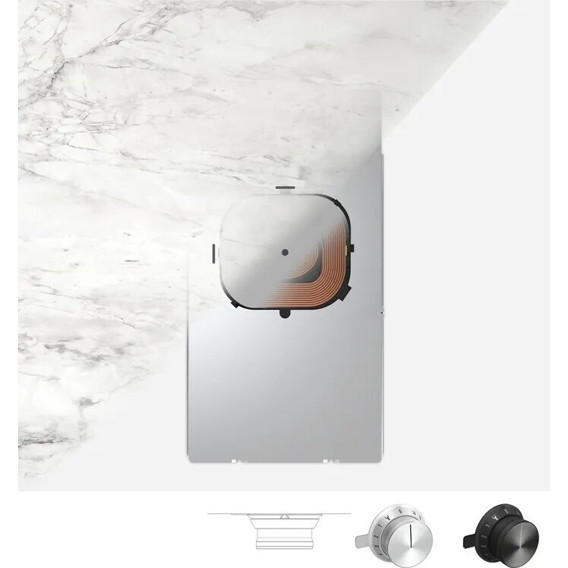
Backofen Set Mit Kochfeld Kaufen
FollowOverview
-
Sectors call center
-
Posted Jobs 0
Company Description
It’s Time To Forget Pyrolysis Oven Comparison: 10 Reasons Why You Don’t Have It
Pyrolysis Oven Comparison: A Comprehensive Guide
Pyrolysis is a thermal decomposition procedure utilized to convert natural products into biochar, bio-oil, and synthetic gas. This procedure requires a specialized tool known as a pyrolysis oven, which heats up biomass in the absence of oxygen, enabling the breakdown of materials without combustion. The marketplace provides a range of pyrolysis ovens matched for different applications, ranging from small-scale lab devices to large commercial machines. This post will supply a comprehensive comparison of different kinds of pyrolysis ovens, their specs, applications, and benefits, in addition to an often asked concerns area.
Understanding Pyrolysis Ovens
Before delving into comparisons, it is important to understand the various kinds of pyrolysis ovens readily available. These ovens can be categorized based on:
- Size (laboratory-scale vs. industrial-scale)
- Heating Method (electrical vs. direct fire)
- Material (steel vs. ceramic refractory)
Key Features and Specifications
When examining pyrolysis ovens, some important specifications to think about consist of:
- Capacity: The quantity of biomass it can process in a single batch.
- Operating Temperature: The maximum temperature at which the oven can operate.
- Energy Consumption: How much energy the oven utilizes throughout the pyrolysis procedure.
- Cooling System: The systems in location to cool down the oven post-operation.
Comparison Table of Popular Pyrolysis Ovens
The table below summarizes three widely used pyrolysis ovens in terms of their specifications, applications, and advantages:
| Feature | Model A | Model B | Design C |
|---|---|---|---|
| Type | Batch | Constant | Small-scale Lab |
| Capability | 500 kg/batch | 1000 kg/hour | 50 kg/batch |
| Operating Temp | 400 ° C | 600 ° C | 300 ° C |
| Energy Consumption | 20 kWh | 50 kWh | 5 kWh |
| Cooling System | Water-cooled | Air-cooled | None |
| Application | Charcoal production | Hazardous waste | Research experiments |
| Advantages | High performance | High throughput | Compact design |
1. Model A Pyrolysis Oven
Description: Model A is a batch-type pyrolysis oven suggested for small to medium-scale charcoal production. It runs at an optimum temperature level of 400 ° C and boasts an energy intake of 20 kWh per batch.
Applications: Mainly used in the production of charcoal from biomass feedstocks like wood chips, farming residues, and other natural materials.
Advantages:
- High carbon capture performance
- Low operational expenses
- Simple batch processing
2. Design B Pyrolysis Oven
Description: Model B is a continuous-flow pyrolysis oven developed for industrial-scale processing with a capacity of 1000 kg per hour. It can reach higher running temperature levels of approximately 600 ° C, making it appropriate for a broader variety of feedstocks.
Applications: Often used for waste-to-energy projects, recycling rubber, and processing farming waste.
Benefits:
- Higher throughput compared to batch ovens
- Ideal for constant feedstock supply
- Better conversion rates for different products
3. Model C Pyrolysis Oven
Description: Model C is a compact, small lab oven suited for research and experimental functions, with a lower capability of 50 kg per batch. It operates approximately 300 ° C and uses just 5 kWh of energy.
Applications: Used mainly in labs for research study and advancement in pyrolysis procedures.
Advantages:
- Space-efficient design
- Lower energy requirement
- Suitable for evaluating various feedstocks
Key Considerations When Choosing a Pyrolysis Oven
Selecting the ideal pyrolysis oven depends on several factors. Here’s a list of considerations:
-
Scale of Operation: Determine the volume of biomass you intend to process regularly.
-
Feedstock Type: Different products might require various operating temperatures and processing techniques.
-
Spending plan: Consider preliminary financial investment costs and operational expenditures.
-
Final Product Requirements: Define what you intend to produce– whether it’s biochar, bio-oil, or syngas.
-
Space Available: Ensure you have sufficient space for installation and future growths.
-
Regulatory Compliance: Confirm that the pyrolysis oven meets regional environmental guidelines and Vixaro Versand requirements.
Regularly Asked Questions (FAQ)
Q1: What are the ecological impacts of utilizing a pyrolysis oven?
Pyrolysis ovens can reduce biomass waste, lower greenhouse gas emissions, and produce important final product. Nevertheless, appropriate operation and upkeep are important to reduce any prospective air and water contamination.
Q2: How is biomass prepared before pyrolysis?
Biomass ought to be dried and shredded into uniform pieces to improve the performance of the pyrolysis process. The moisture material ought to preferably be listed below 20%.
Q3: Can I use several feedstock types in a single pyrolysis oven?
Yes, many pyrolysis ovens can handle a variety of feedstocks; nevertheless, testing each type independently is recommended to determine optimal conditions and output quality.
Q4: How long does the pyrolysis process take?
The process can differ considerably depending on the oven type and specifications set. Typically, batch pyrolysis can take anywhere from a couple of hours to over 12 hours.
Q5: Is upkeep required for pyrolysis ovens?
Yes, routine maintenance is important for optimal performance. This consists of cleaning out residues and looking for wear and tear on parts.
In conclusion, picking the best pyrolysis oven requires mindful consideration of particular requirements, applications, and designated outcomes. With different models readily available, users can process biomass efficiently while adding to sustainability efforts. Comprehending the crucial requirements, functions, and the advantages of various types of pyrolysis ovens is crucial in making notified decisions, whether for small lab experiments or massive industrial operations.

